Prior to the 1500s, very few people knew of the existence of the chinchilla. Since chinchillas evolved in an area, the South American Andes Mountains at high altitude, which was remote and difficult to travel to, only the native people of the area had any knowledge of them.
This changed during the 1500s when the Spanish conquered the Chincha Indians. The name “chinchilla” means “little chincha.” From the Chincha people, they learned not only of the existence of the animal, but they also learned how to capture them and use their fur for garments. By the 1700s, European royalty and later wealthy Europeans prized coats made of chinchilla fur and began giving them as presents causing a large demand for the pelts.

By the 1800s, chinchilla fur was in high demand all over Europe. It is estimated that over a million chinchillas were trapped and killed for their pelts between 1800 and the early 1900s. This decimated the herds of wild chinchillas causing the South American governments to pass laws protecting the chinchilla and making it illegal to kill or export chinchillas and their pelts. These laws were enacted in 1918.
The British contributed indirectly to the decline of the chinchilla during the1800s and early 1900s. A love of hunting was present in the British aristocracy who worked at various mining ventures in South America. For this reason, red foxes were imported and released for the purpose of weekend hunting. Unfortunately, some foxes escaped the hunters and found the chinchillas to be easy prey. By the time the laws protecting the chinchilla were passed, the chinchilla population was decimated to the point of no return. Where once lived more than a million chinchillas, just a few thousand currently exist. Due to their low numbers, both species of wild chinchilla are listed as endangered.
From 1918 to 1923, Mathias Chapman was living in Chili and working as a mining engineer for Anaconda Copper. During his time in Chili, a native to the area brought a chinchilla to the camp where Mr. Chapman was working, intending to sell it. Mathias bought the chinchilla and kept it as a pet. Thanks to his time with this little animal, he became more and more interested in chinchillas and began making a plan for capturing and exporting some to the United States so he could breed chinchillas and sell them as pets.
Since it was already illegal to export chinchillas to other countries, Mr. Chapman needed to get permission to from the Chilean government. Within one year of purchasing his first chinchilla, he started the process. Although the government was very reluctant to grant permission, Mathias did not stop applying until he received permission to trap several animals for export to the United States.

Originally, Mr. Chapman hired 23 trappers to collect chinchillas for him. They returned with very few animals. Mathias did not give up. Instead, he planned and went on many field trips to trap them, taking the trappers with him each time. The trips covered immense areas in both Chili and Peru and the entire trapping party lived in very primitive conditions during each of the trips. One trapper took four weeks to return from the area where he trapped a single chinchilla. He carried it in an old five gallon oil can which was strapped to the back of his donkey. This chinchilla was trapped at an altitude of 14,000 to 18,000 feet above sea level. After many trips, Mr. Chapman and his group trapped only eleven animals in four years. Of the animals they trapped, it is believed that most of the chinchillas were of the lanigera species and the rest were a mix of costina and brevicuadata. Recently, the scientific community has determined that the costina is just a smaller version of the lanigera. Only three of the eleven chinchillas captured were females.


Attempts previously made by other people to bring chinchillas down from the high altitudes where they were captured ended in the death of all of the chinchillas involved. Chapman decided to take a different approach to transporting them. Previously, the chinchillas were brought to the coast in one long trip resulting in a large drop in elevation, killing the chinchillas. Mathias decided to make the trip from his home at 10,000 feet to sea level in several stages with stops along the way for the chinchillas to adjust to the new elevation. This method took a full year to get the chinchillas to the coast. For the trip, Mr. Chapman had special wooden cages made for the chinchillas. They were shaded from the sun and cooled with ice when necessary. At the end of the twelve month trip down the mountains, all of the chinchillas survived. While making the trip down the mountains, Mathias worked to get permission to take the chinchillas to the United States. Permission was granted in 1923.

During their long trip, the chinchillas traveled by train from Poterillos, Chile to the coast. After a stay designed to allow the chinchillas to acclimate, they were transported by the steamer, Palena to Calloa, Peru. From there, they went by the steamship Anyu Maru to San Pedro, California where they arrived on February 22, 1923. During the trip, the chinchillas were given the same diligent care resulting in the loss of only one adult chinchilla and the birth of one baby. When boarding the ship, Mr. Chapman had his friends bring the chinchillas on board in their pockets. He waited until the ship was well out to sea to inform the captain that he had live animals aboard. After this disclosure, he was allowed to bring the cages up from the hold. He threatened the captain with a lawsuit if anyone interfered with the chinchillas. Mr. and Mrs. Chapman worked hard during the trip to keep the chinchillas cool with ice and cool, wet towels. The ice was placed in special compartments in the cages and the towels were draped over the cages.

The chinchillas stayed in Los Angles for a short period while a farm in Tehachapi was being built. In Tehachapi, Mathias tried to approximate the conditions in the wild. He provided the chinchillas with a brick building which contained insulated nest boxes. The chinchillas had access to open air and large spaces where they could exercise. The housing areas were protected from the sun and harsh climate of the high desert. Mr. Chapman fed the chinchillas a variety of feeds.
While at Tehachapi, Mr. Chapman experienced many problems. Both the housing and the diet of the chinchillas were affected. Some of the problems included chemicals in the water supply that affected the reproduction of the chinchillas and the theft of nearly one half of his herd. The thieves broke the padlocks to gain access to the chinchillas. In their attempt to escape with the chinchillas, the thieves drove through the hot desert in cars. The high temperature caused many of the chinchillas to perish. The remaining stolen chinchillas were transported by tramp steamer from Brownsville, Texas to Europe. Mr. Chapman’s attempts to regain custody of the chinchillas resulted in the European authorities ordering the animals to be turned over to a doctor Muller. The chinchillas passed away in the doctor’s care.
After many setbacks and disappointments, Mathias decided to move the chinchillas back to the Los Angeles area. The new farm was located at 4957 West 104th Street. At that time the area was in the country and but was served by the Inglewood, California post office.


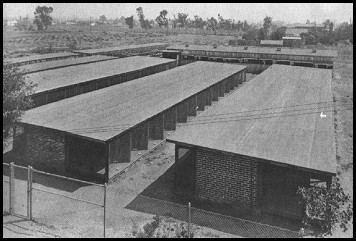
Over the years, Mr. Chapman experimented with the housing and feeding of the chinchillas. One of his changes included cutting the floor space in half since the chinchillas seemed to do well with less exercise. Another change was changing the wooden bottom of the cage to wire mesh. This allowed the droppings to fall through the mesh onto the floor below, making cleaning easier. He also built a cage system which was six feet by 8 feet and tall enough for a man to walk into. This setup had six inches of soil on top of a sturdy roof to insulate the cage from the southern California heat. For additional insulation, he added a twelve inch air space between the roof and ceiling.
As Mr. Chapman’s herd increased, he began offering the chinchillas for sale as pets. At one point, the cost to purchase a pair of breeding animals was as high as $3200. In the 1920’s, the chinchilla population increased by 35%. In the early thirties production went up to 65% a year and by the end of the thirties, there were times when the population was doubling on a yearly basis. The average litter size was 2.5 young per year per female.
Mr. Chapman passed away on December 26, 1934. He had been breeding chinchillas for 11 years. His son and many other new ranchers carried on with his work. Mr. Chapman’s son, R. E. Chapman continued the ranch his father started and called it “World’s Original South American Chinchilla Farm.” By the mid 1960’s, there were approximately 3000 chinchilla ranches throughout the United States and Canada. At that time, most breeders were selling chinchillas as pets for $100 each. Ranches also existed in many other countries except for Asia and Australia. Some of Mathias’ original chinchillas survived him. A particular animal was named “Old Hoff”. This chinchilla lived to be about 22 years old. No one is sure of his exact age since he was born in the wild. Old Hoff was named after the man who built the shipping cages that were used to bring the chinchillas to the United States. Old Hoff was tattooed with a number 8 indicating that he was the eighth chinchilla caught.
When Mr. Chapman and other early ranchers began working with chinchillas, most people had never heard of a chinchilla, let alone seen one in person. The fur market had yet to discover their usefulness and there was no stable market for chinchilla fur.
In the years after Mr. Chapman’s death, ranchers experimented with different methods of breeding chinchillas. Originally, pair mating was the only method in use. In the fifties, polygamous mating proved to be a successful method since it offered the chance to put each superior sire with multiple females at one time. As the number of chinchillas in captivity increased, more attention was paid to pelt production for the fur industry. Additionally, a few more animals of both the Lanigera and Brevicaudata varieties were imported from South America and incorporated into some herds in the United States, Canada and Europe, but most of the chinchillas in the United States can be traced back to Mr. Chapman’s original eleven. Today, chinchillas enjoy the best of conditions both in the specialized, climate controlled barns of the chinchilla ranchers and in the loving homes of responsible pet owners.
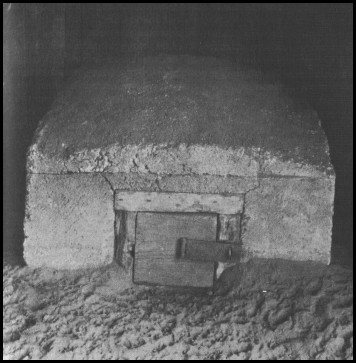
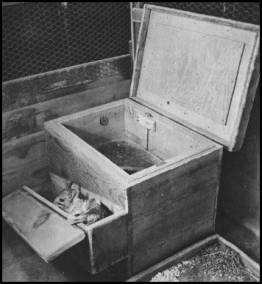


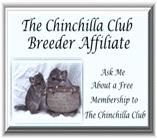
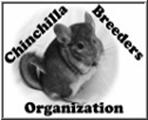 Site Last Updated on December 31, 1969 05:00 pm
Site Last Updated on December 31, 1969 05:00 pm